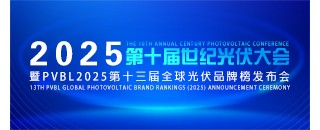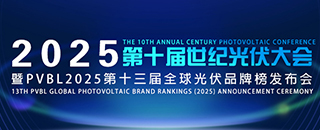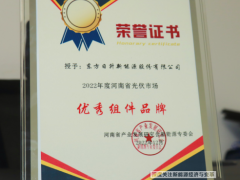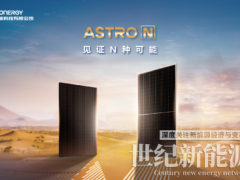使用直徑約3英尺的小型拋物面反射鏡,結合一種新的雙層陶瓷磁盤,就可以產生激光,

利用太陽光線,產生一束純能量,這很久以來一直就是一些發明家的目標,從古希臘工程師阿基米德(聚光鏡子摧毀入侵船只)到詹姆斯•邦德(James Bond)都是這樣,就像影片《金剛鉆》(Diamonds are Forever)和《誰與爭鋒》(Die Another Day)中基于空間的激光器。
但新的研究可能實現這一夢想,進行更實際的應用,就是用作可再生能源。
烏茲別克斯坦(Uzbekistan)的研究人員提出了一項計劃,使用直徑約3英尺的小型拋物面反射鏡,結合一種新的雙層陶瓷磁盤,就可以產生激光。
“有可能制成太陽能為動力的激光器,具有30%至40%的效率,”謝馬克哈馬特•派茲葉特(Shermakhamat Payziyev)說,他是塔什干(Tashkent)科學和生產協會(Scientific and Production Association)研究員。
派茲葉特說,他的方案要領先一步,有一個類似項目是日本研究人員2007年透露的,是用菲涅耳(Fresnel)玻璃透鏡,而不是反射鏡,他們創造激光用來燃燒海水中發現的鎂。
派茲葉特說,他的方案刊登在本月的《可再生和可持續能源雜志》(Journal of Renewable and Sustainable Energy)上,是要利用太陽能創造激光,用于驅動電動汽車的電池。
“我們提出一個想法,就是如何有效地把太陽能轉換成激光,”派茲葉特說。“原則上,它可以轉換成電力,這需要使用聚光光伏組件,效率約為50%,在不久的將來會接近100%。”
太陽能為動力的激光器已經存在,處在實驗運行階段。但一直存在兩個主要問題:消除反射鏡產生的熱量,并有效地把一種能量轉換為另一種。
派茲葉特的裝置解決了這兩個問題。
當陽光照射陶瓷材料時,會激發電子,使它們發出特定波長的激光。為了控制這些熱量,陶瓷盤要安裝在散熱器上面,通過散熱器的是被泵抽的水。派茲葉特說,這一激光隨后會在陶瓷表面再次進行反射彈跳,從而產生額外的效率。
聽起來很酷,但這個項目確實有一些人持懷疑態度。
艾利•雅布龍諾維奇(Eli Yablonovich)是加州大學伯克利分校(University of California, Berkeley)電氣工程和計算機科學教授,也是美國國家科學基金會(NSF:National Science Foundation)節能電子科學中心主任,他寫了一篇論文,討論非聚焦太陽能驅動的激光,那還是在1983年。他說,聚集激光器還沒有真正設計出來。
“他們沒有解決任何有用的問題,”雅布龍諾維奇說。來自太陽能的激光可以定向到太陽能電池,但增加的復雜性是不值得的。”
雅布龍諾維奇認為,先進的太陽能集熱器更劃算,可用于能量收集,而他們合作成立的阿爾塔設備公司(Alta Devices)是一家硅谷公司,正在制造高效率的太陽能光伏電池。
派茲葉特說,盡管存在這些障礙,他提出的太陽能為動力的激光也會取得進展。他說,它可用于合成大批量的納米粒子和納米粉,用于制造復合材料、超導體、太陽能電池和先進的油漆或涂料。
他工作的場地是在世界上最大的太陽爐,就是所說的烏茲別克斯坦大太陽爐(Big Solar Furnace)。
本文為麻省理工《科技創業》原創文章,未經書面許可,嚴禁轉載使用。
Harnessing the sun's rays to produce a beam of pure energy has long been the goal of inventors from the ancient Greek engineer Archimedes (focused mirrors to destroy invading ships) to James Bond villains (space-based lasers of "Diamonds are Forever" and "Die Another Day").
But new research may realize the dream for a more down-to-Earth use: renewable energy.
A researcher in Uzbekistan has proposed a plan using small parabolic mirrors about 3 feet in diameter, combined with new two-layer ceramic disks to produce laser light.
"It is possible to make solar-powered lasers with the efficiency of 30 to 40 percent," said Shermakhamat Payziyev, a researcher at the Scientific and Production Association "Akadempribor" in Tashkent.
Payziyet said his proposal is a step beyond a similar project unveiled by Japanese researchers in 2007 which used a glass Fresnel lens instead of mirrors to create a laser to combust magnesium found in seawater.
Payziyet says his plan, published this month in the Journal of Renewable and Sustainable Energy, would use the sun's energy to create a laser to power electric cells.
"We proposed an idea how to convert effectively the solar light into the laser," Payziyet said. "In principle it can be converted into electricity by using concentrating photovoltaic modules with the efficiency of about 50 percent or closer to 100 percent in the near future."
Solar-powered lasers already exist on an experimental basis. But there have always been two major issues: removing the heat generated by the mirrors and the converting one kind of power to another efficiently.
Payziyet's unit tackles both.
When sunlight hits the ceramic material, it excites the electrons and causes them to emit laser light of a specific wavelength. To control the heat, the ceramic disk would be mounted atop a heat sink through which water would be pumped. The laser light would then take another reflective bounce through the ceramic surface, which produces an extra amount of efficiency, Payziyet said.
Sounds cool, but the project does have some doubters.
Eli Yablonovich, professor of electrical engineering and computer sciences at the University of California at Berkeley and director of the NSF's Center for Energy Efficient Electronics Science, wrote a paper about unfocused solar powered lasers back in 1983. He says focused lasers haven't really worked out.
"They don't solve any useful problems," Yablonovich in an email. Laser energy from the sun "can be directed into a solar cell, but the added complexity is not worth it."
Yablonovich believes that advanced solar collectors are a better bang for the energy-collecting buck and co-founded Alta Devices, a Silicon Valley firm which is making high-efficiency photovoltaic solar cells.
Despite the obstacles, Payziyet says his proposed solar-powered laser will get off the ground. He says it can be used to synthesize industrial quantities of nano-particles and nano-powders used to manufacture composite materials, superconductors, solar batteries and advanced paints or coatings.
He works at the site of the world's largest solar furnace, known as the Big Solar Furnace in Uzbekistan. It sounds like a bad guy's lair, but Payziyev says he's no Bond villain out to create a death ray.
"It is obvious that any new idea will be considered regarding its use in military purposes at first, but I am not supporter of this bad idea," he said. "The solar laser is a promising way in the use of renewable energy as an ultimate energy source for peaceful purposes."

利用太陽能量制成激光束,向現實更走進了一步,來源:塔什干科學和生產協會
把太陽的能量聚焦成超強激光束,這項技術又邁進一步。烏茲別克斯坦研究人員希望把太陽的能量聚焦為一束激光,用作可再生能源。這一方案需要使用3英尺寬的拋物面反射鏡。利用太陽光線,產生一束純能量,這很久以來一直就是一些發明家的目標,從古希臘工程師阿基米德(聚光鏡子摧毀入侵船只)到詹姆斯•邦德(James Bond)都是這樣,就像影片《金剛鉆》(Diamonds are Forever)和《誰與爭鋒》(Die Another Day)中基于空間的激光器。
但新的研究可能實現這一夢想,進行更實際的應用,就是用作可再生能源。
烏茲別克斯坦(Uzbekistan)的研究人員提出了一項計劃,使用直徑約3英尺的小型拋物面反射鏡,結合一種新的雙層陶瓷磁盤,就可以產生激光。
“有可能制成太陽能為動力的激光器,具有30%至40%的效率,”謝馬克哈馬特•派茲葉特(Shermakhamat Payziyev)說,他是塔什干(Tashkent)科學和生產協會(Scientific and Production Association)研究員。
派茲葉特說,他的方案要領先一步,有一個類似項目是日本研究人員2007年透露的,是用菲涅耳(Fresnel)玻璃透鏡,而不是反射鏡,他們創造激光用來燃燒海水中發現的鎂。
派茲葉特說,他的方案刊登在本月的《可再生和可持續能源雜志》(Journal of Renewable and Sustainable Energy)上,是要利用太陽能創造激光,用于驅動電動汽車的電池。
“我們提出一個想法,就是如何有效地把太陽能轉換成激光,”派茲葉特說。“原則上,它可以轉換成電力,這需要使用聚光光伏組件,效率約為50%,在不久的將來會接近100%。”
太陽能為動力的激光器已經存在,處在實驗運行階段。但一直存在兩個主要問題:消除反射鏡產生的熱量,并有效地把一種能量轉換為另一種。
派茲葉特的裝置解決了這兩個問題。
當陽光照射陶瓷材料時,會激發電子,使它們發出特定波長的激光。為了控制這些熱量,陶瓷盤要安裝在散熱器上面,通過散熱器的是被泵抽的水。派茲葉特說,這一激光隨后會在陶瓷表面再次進行反射彈跳,從而產生額外的效率。
聽起來很酷,但這個項目確實有一些人持懷疑態度。
艾利•雅布龍諾維奇(Eli Yablonovich)是加州大學伯克利分校(University of California, Berkeley)電氣工程和計算機科學教授,也是美國國家科學基金會(NSF:National Science Foundation)節能電子科學中心主任,他寫了一篇論文,討論非聚焦太陽能驅動的激光,那還是在1983年。他說,聚集激光器還沒有真正設計出來。
“他們沒有解決任何有用的問題,”雅布龍諾維奇說。來自太陽能的激光可以定向到太陽能電池,但增加的復雜性是不值得的。”
雅布龍諾維奇認為,先進的太陽能集熱器更劃算,可用于能量收集,而他們合作成立的阿爾塔設備公司(Alta Devices)是一家硅谷公司,正在制造高效率的太陽能光伏電池。
派茲葉特說,盡管存在這些障礙,他提出的太陽能為動力的激光也會取得進展。他說,它可用于合成大批量的納米粒子和納米粉,用于制造復合材料、超導體、太陽能電池和先進的油漆或涂料。
他工作的場地是在世界上最大的太陽爐,就是所說的烏茲別克斯坦大太陽爐(Big Solar Furnace)。
本文為麻省理工《科技創業》原創文章,未經書面許可,嚴禁轉載使用。
Harnessing the sun's rays to produce a beam of pure energy has long been the goal of inventors from the ancient Greek engineer Archimedes (focused mirrors to destroy invading ships) to James Bond villains (space-based lasers of "Diamonds are Forever" and "Die Another Day").
But new research may realize the dream for a more down-to-Earth use: renewable energy.
A researcher in Uzbekistan has proposed a plan using small parabolic mirrors about 3 feet in diameter, combined with new two-layer ceramic disks to produce laser light.
"It is possible to make solar-powered lasers with the efficiency of 30 to 40 percent," said Shermakhamat Payziyev, a researcher at the Scientific and Production Association "Akadempribor" in Tashkent.
Payziyet said his proposal is a step beyond a similar project unveiled by Japanese researchers in 2007 which used a glass Fresnel lens instead of mirrors to create a laser to combust magnesium found in seawater.
Payziyet says his plan, published this month in the Journal of Renewable and Sustainable Energy, would use the sun's energy to create a laser to power electric cells.
"We proposed an idea how to convert effectively the solar light into the laser," Payziyet said. "In principle it can be converted into electricity by using concentrating photovoltaic modules with the efficiency of about 50 percent or closer to 100 percent in the near future."
Solar-powered lasers already exist on an experimental basis. But there have always been two major issues: removing the heat generated by the mirrors and the converting one kind of power to another efficiently.
Payziyet's unit tackles both.
When sunlight hits the ceramic material, it excites the electrons and causes them to emit laser light of a specific wavelength. To control the heat, the ceramic disk would be mounted atop a heat sink through which water would be pumped. The laser light would then take another reflective bounce through the ceramic surface, which produces an extra amount of efficiency, Payziyet said.
Sounds cool, but the project does have some doubters.
Eli Yablonovich, professor of electrical engineering and computer sciences at the University of California at Berkeley and director of the NSF's Center for Energy Efficient Electronics Science, wrote a paper about unfocused solar powered lasers back in 1983. He says focused lasers haven't really worked out.
"They don't solve any useful problems," Yablonovich in an email. Laser energy from the sun "can be directed into a solar cell, but the added complexity is not worth it."
Yablonovich believes that advanced solar collectors are a better bang for the energy-collecting buck and co-founded Alta Devices, a Silicon Valley firm which is making high-efficiency photovoltaic solar cells.
Despite the obstacles, Payziyet says his proposed solar-powered laser will get off the ground. He says it can be used to synthesize industrial quantities of nano-particles and nano-powders used to manufacture composite materials, superconductors, solar batteries and advanced paints or coatings.
He works at the site of the world's largest solar furnace, known as the Big Solar Furnace in Uzbekistan. It sounds like a bad guy's lair, but Payziyev says he's no Bond villain out to create a death ray.
"It is obvious that any new idea will be considered regarding its use in military purposes at first, but I am not supporter of this bad idea," he said. "The solar laser is a promising way in the use of renewable energy as an ultimate energy source for peaceful purposes."
 微信客服
微信客服 微信公眾號
微信公眾號









0 條